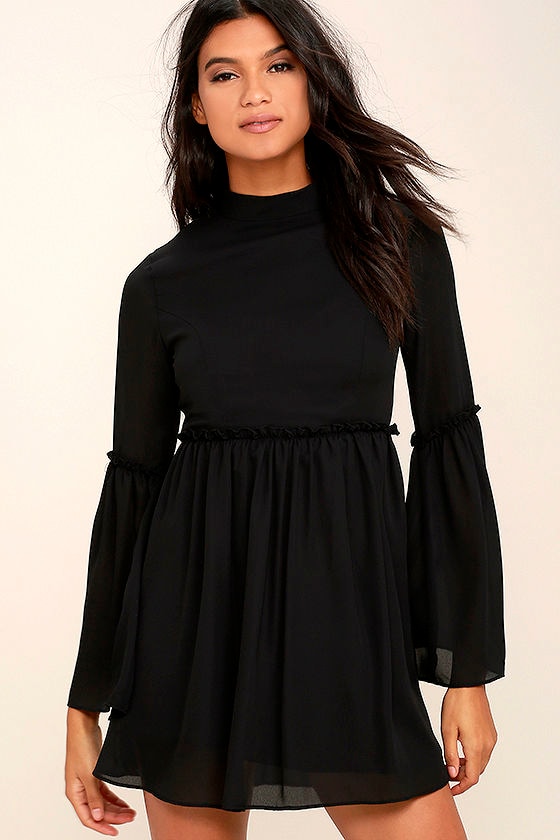Table of Content

Different types of party such as children's party, cocktail party, garden party and costume party would tend to require different styles of dress. One classic style of party dress for women in modern society is the little black dress. By 1920, the "new woman" was a trend that saw lighter fabrics and dresses that were easier to put on.
Consent is not a condition of any purchase. Reply HELP for help and STOP to cancel. Will usually ship within 3 business days of receiving cleared payment. Compare and shop pre-owned and vintage DOUBLE BLACK dresses on sale for babies across hundreds of stores in one place.
SHOP BY CATEGORY
By the end of the century, these dresses featured a tighter fit on the arms and women's upper bodies. Dresses were made snug by featuring slits on the sides of the dress that were pulled tight in order to fit a woman's figure. Historically, dresses could also include other items of clothing such as corsets, kirtles, partlets, petticoats, smocks, and stomachers. Shopping online can be frustrating when it comes to finding the perfect fitting clothing piece or accessory. At shopAKIRA.com, accurate measurements and fit are important in order for our customer to find the perfect item.

The bottoms of the skirts could be tucked into the waistband when a woman was near a cooking or heating fire. Dresses are outer garments made up of a bodice and a skirt and can be made in one or more pieces. Dresses are generally suitable for both formal wear and casual wear in the West for women and girls. Found something you love but want to make it even more uniquely you? Many sellers on Etsy offer personalized, made-to-order items.
Bodycon dress
From handmade pieces to vintage treasures ready to be loved again, Etsy is the global marketplace for unique and creative goods. It’s also home to a whole host of one-of-a-kind items made with love and extraordinary care. While many of the items on Etsy are handmade, you’ll also find craft supplies, digital items, and more. During World War II, dresses were slimmer and inspired by military uniforms. After WWII, the New Look, promoted by Christian Dior was very influential on fashion and the look of women's dresses for about a decade. Paper sewing patterns for women to sew their own dresses started to be readily available in the 1860s, when the Butterick Publishing Company began to promote them.

Hudson Baby Infant Girl Cotton Dress, Cardigan and Shoe 3pc Set, Black Dot is a great baby essentials set for your little one. In the early twentieth century, the look popularized by the Gibson Girl was fashionable. The upper part of women's dresses in the Edwardian era included a "pigeon breast" look that gave way to a corseted waist and an s-shaped silhouette. Women called their dresses "waists" if one-piece, or "shirtwaists," if it consisted of a skirt and a blouse.
MATCHING SETS
Waistlines started out high and by 1915 were below the natural waist. Between 1910 and 1920 necklines were lower and dresses could be short-sleeved or sleeveless. Women who worked during World War I preferred shorter dresses, which eventually became the dominant style overall. In addition to the shorter dresses, waistlines were looser and the dominant colors were black, white and gray.
A party dress designed by Paco Rabanne in 1967, as displayed at the Victoria and Albert Museum. This was worn by Helen Bachofen von Echt at a New York party where she danced with Frank Sinatra. Women's dresses in the 19th century began to be classified by the time of day or purpose of the dress. High-waisted dresses were popular until around 1830. In the 11th century, women in Europe wore dresses that were similar to men's tunics and were loose, with a hemline reaching to below the knees or lower.
Skirts were full, with regular folds and the overskirt allowed the display of an underskirt of contrasting fabric. Embroidery that reflected scientific discoveries, such as newly discovered animals and plants were popular. In the British Colonies, multi-piece dresses were also popular, though less luxurious. Wealthy women living in the Spanish or Dutch colonies in the Americas copied the fashions that were popular from their homelands. A dress is a garment traditionally worn by women or girls consisting of a skirt with an attached bodice (or a matching bodice giving the effect of a one-piece garment).
Starting in the 1550s, middle- and upper-class women in Europe wore dresses which included a smock, stays, kirtle, gown, forepart, sleeves, ruff and a partlet. Undergarments were not worn underneath. In England, Queen Elizabeth dictated what kinds of dresses women were allowed to wear. French women were inspired by Spanish-style bodices and also wore ruffs. French dresses were known as marlottes.
No comments:
Post a Comment